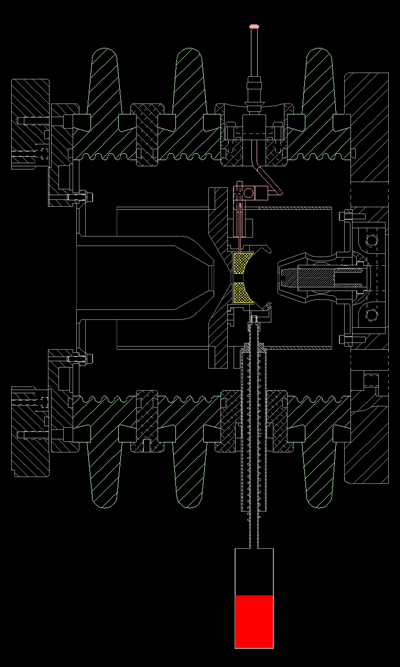
The inside of the cylindrical source body is under high vacuum. An electric potential holds the right side of the assembly at negative 40,000 Volt, the center at negative 32,000 Volt, and the left side at ground (0 Volt).
Cesium metal is heated in a boiler to about 150°C.
Cesium vapor rises through the tube until it reaches the ionizer, a cylindrical piece of molybdenum with a 4 mm diameter hole in the center, heated to about 1,300°C. The right side of the ionizer is concave, facing the cylindrical carbon sample holder (the sample is compacted into an aluminum cartridge with a 1.5 mm hole in the center).
The cesium atoms are thermally ionized (+) on contact with the ionizer and are accelerated by the 8,000 Volt potential difference toward the sample. There they sputter off carbon atoms, many of which accept one of the plentiful valence electrons of the cesium ions in the process. These negative carbon ions are now accelerated to the left and escape through the ionizer into the extraction region to the left, gaining a total of 40,000 electron Volts kinetic energy. The formed negative carbon ion beam can reach a direct current of several hundred micro amperes.